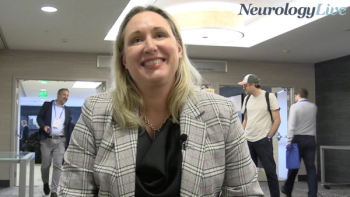
Proposed Chronic Migraine Criteria Would Significantly Increase Patient Population
Data show patients with high frequency episodic migraine are comparable to those with chronic migraine in regard to chronicity and disability.
Jes Olesen, MD
Findings suggests that patients who experience migraine on 8 or more days per month are as disabled as those who experience chronic migraine (CM) 15 days or more per month. Based on these findings, investigators propose expanding the criteria for chronic migraine.
Investigators led by Jes Olesen, MD, professor of neurology at the Danish Headache Centre at the University of Copenhagen in Denmark, sought to address what they consider to be flaws in the current International Classification of Headache Disorders (ICHD) 3 criteria for CM. “First, the criteria are complex and few physicians, even neurologists, actually apply them correctly. Second, the diagnostic criteria allow for a combination of migraine and tension-type headaches (TTH). Third, and perhaps most importantly, the diagnostic criteria do not account for individuals who have a high frequency of migraine, no TTH or TT-like headaches, and a high level of disability,” the authors wrote.
The study compared socioeconomic impact in patients with CM, according to the current ICHD-3 criteria, and patients with high frequency episodic migraine (HFEM). By definition, HFEM patients experience 8 or more migraine days but less than 15 headache days per month. The socioeconomic impact in the 2 groups was measured using Danish registries, while a Russian student population was incorporated to determine the generalizability of the number of patients who fulfill the current and proposed CM criteria.
Results showed that the number of lifelong or annual attacks (P >.3), comorbid diseases, or self-reported effect of triptans did not differ between the groups. Patients with CM had a similar amount of sickness benefit (P =.207), cash assistance (P =.139), and rehabilitation benefit (P =1) but received more early pension (P =.00135) than those with HFEM. Notably, patients with HFEM purchased significantly more triptans than those with CM (P =.001), signifying a history of chronic disease.
In addition, if the new proposal was accepted, the number of patients with HFEM who are eligible for disability would also change, given that in order to receive early retirement pension, a person must have a documented chronic diagnosis or disability in everyday life. From 1980 to 2016, 33.5% of patients with CM received early retirement pension, compared to 20.8% of patients with HFEM.
“The number of patients with CM will be doubled, and in some countries, the new patients will be able to get preventive treatment reserved for CM,” Olesen told NeurologyLive.
Overall, the findings demonstrate that there is little difference in terms of disease burden, migraine frequency, and overall disability between patients with HFEM and CM. If the criteria are changed, those diagnosed with HFEM will have more access to a greater range of treatment options, including those currently only indicated for treatment or prevention of CM, and resources that are available to those with CM.
Reference
Chalmer MA, Hansen TF, Lebedova ER, Dodick DW, Lipton RB, Olesen J. Proposed new diagnostic criteria for chronic migraine. Cephalalgia. Published online September 22, 2019. doi: 10.1177/0333102419877171.
Newsletter
Keep your finger on the pulse of neurology—subscribe to NeurologyLive for expert interviews, new data, and breakthrough treatment updates.




































